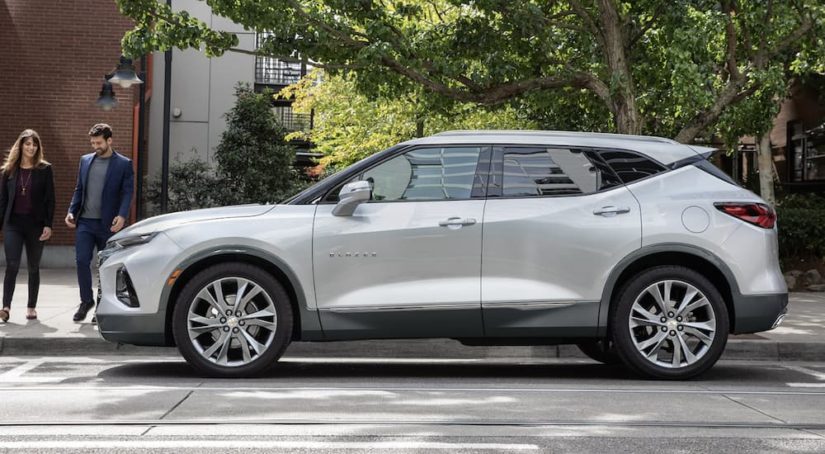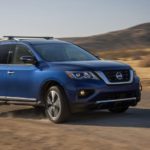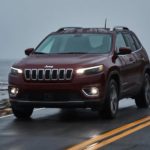Maybe you have a new friend who lives for the mud spatters, and you’d like to understand off-roading enough to have a conversation. Maybe you went off-roading for the first time last summer, and you find that you have fond memories of it. Or maybe you’re thinking that you’d like to try it out yourself, but you still need to be able to drive the family around, take pleasant road trips, or commute comfortably to work. If you fall into the last category, consider this fact––as SUVs and the sport of off-roading have become more popular, car manufacturers have begun to create vehicles able to perform to some extent in both arenas.
For instance, consider the 2022 Chevy Blazer vs 2022 Honda Passport. While neither is designed for truly hard-core off-roading, both will allow for some fun (or get you out of trouble if you just took an ill-advised shortcut) and can still keep the Monday through Friday highway miles quite comfortable. I’ll review a bit of what you can do with them, as well as why they present a compromise between highway drivers and off-road warriors.
If you’re new to the off-road world, you may have noticed that there’s a lot of terminology you likely haven’t encountered before, so I’ll address some of that here, too––a lot of the terms related to off-roading have to do with the things that make a vehicle able to manage it, and to what extent it can. I’ll begin with the one I find most important because I am a big fan of preserving the natural world––the very name of the sport.
Go Gently Off-Road? How?
Believe it or not, off-roading can be gentle on the environment because “off-roading” isn’t usually done off-road. In fact, the sport of off-roading really refers to driving on various types of unpaved, unimproved roads. Those usually take two forms, unimproved public roads and specified trails, often private. If you spend much time in rural areas, you know that there are many, many two-tracks, seasonal roads, and farm roads out there. Many of them are drive-at-your-own-risk, and they can provide lots of entertainment.
Growing up, I spent all my summers in northern Michigan, which is laden with two-tracks. I learned to drive in what off-roaders affectionately call a Cornbinder––a 1966 International Harvester Travelall––and, possibly unbeknownst to my parents, spent many happy hours wandering down muddy, narrow roads to nowhere in particular. (I can thus tell you from personal experience that it’s advisable to send the most road-worthy vehicle through first to make sure whatever off-the-beaten-path route you choose is negotiable.) The best way to find interesting local roads is to ask around, check your local satellite view on Google maps, or just go looking.
Designated off-road trails are also not hard to find––particularly in areas where conditions can be challenging. A number of National Parks, such as the Rocky Mountains in Colorado, Big Bend in Texas, New River Gorge in West Virginia, and Olympic in Washington, to name a few, have moderate to difficult trails of varying lengths, as do many State parks. In addition, there are privately-owned areas around the country that are designed specifically for off-roading. These vary in size and difficulty, but the largest is probably Windrock Park in Tennessee, which covers 73,000 acres and includes cabins, RV hookups, and camping! When you’re checking out what’s available in your area, just make sure you’re clear about what you’re driving so you don’t get in over your head.
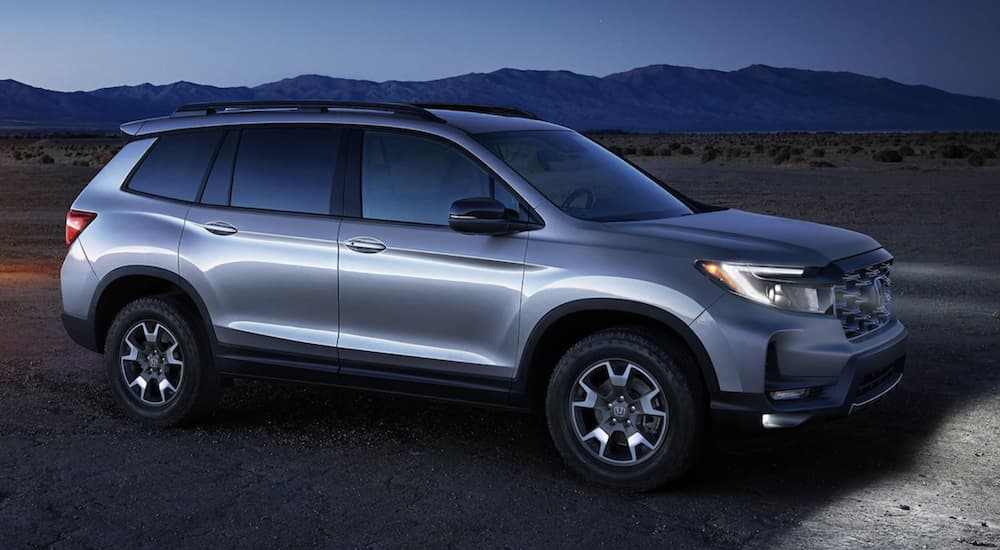
Let’s Talk Capacities
If you’re thinking about climbing 30° angle rock piles, you’d need a very heavy-duty vehicle. Four-wheel drive is just the start. It would need a big engine, reinforcement with serious skid plates (sometimes aluminum, sometimes steel, all designed to keep your undercarriage safe from the dings and furrows of grounding-out misfortune), very sturdy tires, locking differentials, and a tow strap or chain to get you out when you get stuck. (I’d include a roll bar and a helmet, but that’s me.)
We are not, however, talking about that kind of off-roading here. We’re talking about the beginning off-roader, who’d like to be able to explore the less accessible parts of the outdoors, but still wants to enjoy (and be able to afford, because that engine and armor really suck up gas) highway driving. For a little light off-roading, you need a few basics. AWD or 4WD (as you likely know, vehicles so equipped are often referred to as 4x4s) are very basic requirements, as is enough ground clearance to ride over the humps on two-tracks. (Serious off-roaders are often “lifted,” meaning they have raised suspensions or frames.)
It’s also extremely helpful to have a means of applying different levels of torque to all four wheels. This is usually accomplished via driving modes or locking differentials, though some vehicles handle it differently, as you’ll see. This ability is imperative for negotiating mud and sand, as it keeps potentially stuck wheels from spinning helplessly (and hopelessly). If you’re going heavier, some degree of body cladding is useful, as are skid plates. The 2022 Chevy Blazer or Honda Passport have some of these features and are good examples of the compromise between highways and more demanding byways, so let’s talk about them.
Chevy’s Gentle Off-Road Entry
The 2022 Chevy Blazer has two different engine options (a 2.0L turbo-four and a 3.6L V6) and is available in four trims, the 2LT, the 3LT, the RS, and the Premier. You can add AWD to all trims, though it’s standard in the RS. Since we’re talking about off-roading here, though, I’m going to focus on the RS. With its standard 308 hp V6 engine and AWD, this is the trim that Chevy put together with mild off-roading in mind. Chevy has even addressed the differential question. Rather than having common open differentials, the RS is equipped with a dual-clutch feature. Each rear axle has a clutch, and these enable the driver to push more power to the rear outside wheel around corners.
The Blazer also has the useful Off-Road and Tow and Haul drive modes, which adjust shifting to support lower speeds, providing greater traction through “stickier” surfaces and heavier tow loads. The standard 3.49 axle ratio also adds a little more performance, and if you need to bring extra stuff, the RS can tow up to 4,500 lbs. It’s also got an 8-inch display that includes a rearview camera with Hitch Assist and Hitch View features to help you attach and safely park your trailer. With 7.4 inches of ground clearance, you shouldn’t be climbing rock piles, but you can probably avoid getting hung up on a two-track.
Built For Highway Safety, Too
The Blazer’s Chevy Assist system has the usual range of safety features––lane departure assist and side blind zone alerts, pedestrian detection, forward collision and rear cross-traffic alerts, and more, with assists such as emergency braking and surround vision available as options. Its electronic StabiliTrak traction control automatically provides greater adaptability when the unexpected forces you into emergency maneuvering, adjusting brakes and torque to help keep you on the road. Your young drivers will be sad to learn that Teen Driver, a key-based system that allows you to set certain limits (speed, audio, and more), is also standard. It will even rat out your kid by providing you with a “report card” on their driving.
In addition, the Blazer RS is equipped with 20 in wheels (21 in wheels available), all-season tires, 64.2 cu.ft. of storage behind the front seats, a roof rack and side rails, a hands-free liftgate, intelligent high beams, sunroof, and a host of other features designed to keep you comfortable on the back road or the highway. And since it’s rated at 21 MPG combined with its V6 engine and all-wheel drive, you won’t go broke driving it.
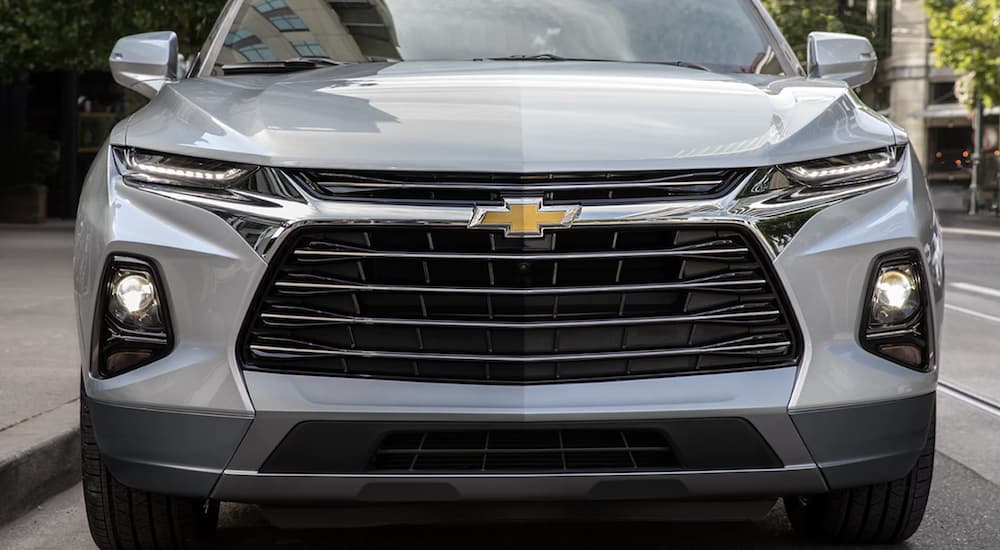
Honda’s New Passport to Fun
In 2022, Honda has also brought out a new contender for gentle off-roading. The 2022 Passport is available in three trims, the EX-L, the TrailSport, and the Elite. Like the Blazer, they’re all equipped with the usual driver-assistive safety tech––in this case, supplied by Honda’s Safety Sense suite––and enough comfort-related features to keep you happy on the highway. The vehicle I want to address here, though, is the new Passport TrailSport. This SUV brings some genuine off-roading ability to your weekends. For starters, it has 8.1 inches of ground clearance––enough to keep you from getting hung up on at least some of the landscape. It’s equipped with a 3.5L V6 engine and Honda’s i-VTM4 all-wheel drive system.
According to Car and Driver, “the system can funnel up to 70 percent of the engine’s torque to the rear end and route up to 100 percent of that grunt to either rear wheel.” This is a useful feature when that interesting two-track you were exploring suddenly becomes a muddy 25-degree grade. (Backing up is also an option.) The TrailSport’s track width has been slightly increased to improve its stability, and the satellite-based navigation system can help you find your way back to civilization at the end of your adventure. Its interior features––including leather-trimmed and heated front seats, a moonroof, an 8-inch screen, a 7-speaker stereo system, a powered hands-free liftgate, and more––will make all aspects of your journey enjoyable.
Keep Safety and Nature In Mind
Whatever vehicle you choose, remember that even light off-roading carries some risk. Consider going with a group––or at least one more car––and bringing a radio because cell reception can be spotty in the wilderness. Always let someone know where you’re going, and wear your seatbelts! Research any roads you’re unsure of before you drive them––most designated off-road trails in parks are rated for difficulty, and if you’re unsure, ask a ranger or someone who has driven them. Above all, understand your vehicle’s capacity and limitations before you set out, and carry and know how to use tire repair equipment. (This turned out to be the handiest bit of kit I had when I was wandering around Mexico’s Baja Peninsula, where roads are laden with startlingly sharp rocks.)
And please, remember that off-road really doesn’t mean off the road. Wandering aimlessly through deserts, forests, and streams can destroy microenvironments, kill endangered plants and animals, or leave damaging tracks that remain for years. Illicit off-roading will only result in a ban on the sport in the parks and wilderness areas that have so far provided trails. So wherever you go, have fun driving, but use that ability to get off the beaten track and enjoy the beauty of the natural world around you. Happy trails!
